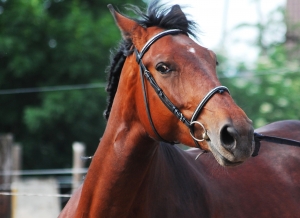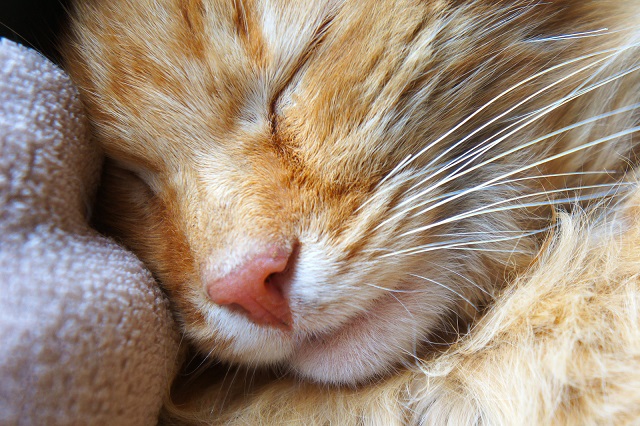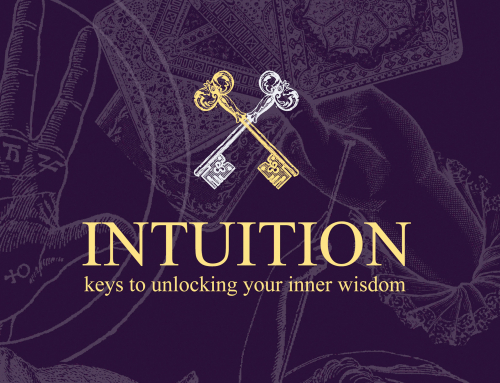When I met my wife, she had a cat named Zoe and for almost ten years, the three of us have lived together. During that time the cat has regarded me as a second-rate housekeeper in training, maintaining order until her actual owner returned home each night.
When Melinda goes away with work for a few days or a week, each evening Zoe often sits at the bottom of the 30 metre driveway, staring searchingly into the dark for a sign that her real owner might return soon. It’s heartbreaking to see and no amount of reassurance from me seems to placate her.
I decided one night that if she didn’t understand my words, perhaps I might explain more easily to her in meditation. That night after she had spent an hour out on the drive, I centred myself and met with her spirit in meditation to explain that her owner Melinda was away but that she missed her and wanted to be home with her. I told her that Melinda would be home again soon (in five days or about 23 sleeps). The following morning the cat seemed more peaceful. That evening she didn’t sit out on the drive expectantly but slept by the open fire, as it was another crisp June night.
In the first year we lived in Epping, Zoe spent most days and nights outside, exploring the garden and chasing geckos. I noticed one day that she didn’t venture outside out much, so in meditation that night I asked her why. She explained that a group of Indian Myna birds attacked her every time they saw her in the garden so I offered to sit outside each day to accompany her. I had breakfast and lunch out on the porch for the next month while she tentatively ventured out on to the lawn. The birds arrived and I moved them on. This continued for several weeks and gradually Zoe was able to re-establish her territory. As the garden flourished, she sought cover beneath the lemon and lime trees so that she could remain outside by herself. These days, she’s much happier outside and often spends her mornings asleep in the shade of the trees during spring and summer.
 For my annual psychic development courses, I’ve introduced animal communication, based on a chapter from my forthcoming advanced Intuition book. Clients often ask about their pets, especially when moving home. Changes in location tend to affect cats more than dogs because cats need to feel comfortable within personal territory.
For my annual psychic development courses, I’ve introduced animal communication, based on a chapter from my forthcoming advanced Intuition book. Clients often ask about their pets, especially when moving home. Changes in location tend to affect cats more than dogs because cats need to feel comfortable within personal territory.
Being able to communicate with your household animals can improve their quality of life if you discover what they enjoy and what stresses them. A client recently asked about a horse and it was immediately apparent that this animal was easily alarmed and tended to be skittish.
 “I’ve seen rabbits that are less easily startled than this horse,” I said as Sandra laughed, nodding in agreement. I clairvoyantly saw a man in his sixties with a tanned, lined face from many hours spent outdoors, soothing the animal. I sensed that he was a former horse trainer who had a talent for helping animals with traumatic histories. Sandra confirmed that she knew who this man was and that he had helped previously.
“I’ve seen rabbits that are less easily startled than this horse,” I said as Sandra laughed, nodding in agreement. I clairvoyantly saw a man in his sixties with a tanned, lined face from many hours spent outdoors, soothing the animal. I sensed that he was a former horse trainer who had a talent for helping animals with traumatic histories. Sandra confirmed that she knew who this man was and that he had helped previously.
She was more interested in the future surroundings of this horse as it was going to be given to someone else in the coming months. This is different from animal communication because it involves looking ahead clairvoyantly to see the different owners this animal will have. I glimpsed it eventually being agisted in the country. It was in a paddock with five other horses. Someone arrived in a car and one horse instantly became alert to the possibility of being ridden. It was the equivalent of saying “walkies” to an excited dog.
In psychic development courses students work from photographs and it’s often surprising how much information is available to a student once a psychic connection is established with the particular animal. Previously, I’ve mostly conducted animal communication lesson with private students while tweaking the process. This progression was accelerated when I had a veterinarian, Ben for private lessons. His aim was to be able to identify serious health issues rapidly when assessing animals in the vet hospital where he worked. Having a thorough knowledge of anatomy and physiology helped enormously when reading from photos. However, its not necessary to have studied science to succeed.
The process involved working from photos supplied by friends and clients. Ben worked through the chart, describing the animal’s physical health and mental state and then we phoned the owner to discuss the particular animal. Owners were often able to confirm behavioural quirks and health issues. These confirmations strengthened his confidence in the process.
Next, we moved on to noticing how the animals’ issues reflected those of the owner and how sometimes the animals’ health was the result of the owner’s problems and the energy within the household. Allowing for health symptoms that are common to particular breeds of dogs, I encouraged him to move his awareness beyond the pet to the whole household and to identify people and circumstances that might negatively affect the pet. Pets sometimes absorb the emotions of the people in a household and if someone is continually anxious, depressed or angry, the animal’s health can suffer as a result. These private lessons ran for several months but the assessment progress improved rapidly because he was handling a variety of animals each working day in the busy practice.
Sometimes the positive or negative influences are other household pets. When clients had two or three dogs but had supplied a photo of one pet, practice readings sometimes focussed on another animal whose behaviour was influencing the household.
I take a practical approach to reading for animals, explaining to clients that I’m not medically trained and any health issues I mention in a reading should be checked with an assessment from a certified professional. Animal readings can be really helpful if the pet has already been seen by a vet but an ongoing undiagnosed issue remains.
A reading sometimes steers the owner in the right direction. Past clients have returned home after readings to research the symptoms I’ve described to them and then asked their veterinary surgeons if the animal might have a particular condition. Experienced professionals often know the best way to test for specific conditions to scientifically confirm or rule out possibilities.
 Animal communication is essentially about good health and quality of life for both the animal and the owner. Sometimes a dog simply wants to take the longs walks that he and his owner once enjoyed daily. Occasionally carers have more family or workplace demands and less time to enjoy the outdoors with a pet. I sometimes remind them that pets are part of their family too. Anyone who has lost a pet knows that the resulting grief can be like losing a family member.
Animal communication is essentially about good health and quality of life for both the animal and the owner. Sometimes a dog simply wants to take the longs walks that he and his owner once enjoyed daily. Occasionally carers have more family or workplace demands and less time to enjoy the outdoors with a pet. I sometimes remind them that pets are part of their family too. Anyone who has lost a pet knows that the resulting grief can be like losing a family member.
Being able to communicate with your pets is fun and it minimises guessing as to the possible causes of situations. If you don’t have time to develop these helpful skills to communicate with your pets, find someone who can do this for you and you’ll ensure that everyone in your family is happy.
© 2018 Paul Fenton-Smith
Paul Fenton-Smith is an author and clairvoyant, based in Sydney, Australia. Paul offers Skype animal readings by appointment. He also teaches intuitive development courses in Sydney and Melbourne.




